On October 4, 1927, work officially began on one of America’s most iconic monuments: the carving of Mount Rushmore in the Black Hills of South Dakota. The project was led by sculptor Gutzon Borglum, whose vision and persistence transformed a simple idea into a towering symbol of national pride and unity.
The concept for Mount Rushmore was first proposed in 1923 by Doane Robinson, a South Dakota historian. Robinson had noticed the enormous boost to local economies provided by places like Yellowstone and Yosemite National Parks, which drew visitors from across the country. Hoping to bring a similar wave of tourism to South Dakota, he devised a bold idea: carve enormous figures into one of the state’s mountains. His original plan was to celebrate regional figures of the American frontier, such as George Armstrong Custer, the explorers Meriwether Lewis and William Clark, and the Lakota leader Red Cloud. Robinson believed these figures embodied the adventurous spirit of the West and would attract visitors eager to learn about the region’s past.
To bring the idea to life, Robinson needed a sculptor with both vision and skill. He turned to Gutzon Borglum, who was already well known for his involvement with the Stone Mountain project in Georgia. When Borglum visited South Dakota in 1924 and first gazed at Mount Rushmore, he declared, “America will march along that skyline.” While he agreed to take on the project, Borglum felt it should go beyond celebrating western legends. Instead, he wanted the monument to capture the broader sweep of American history.

Borglum selected four presidents whose leadership had profoundly shaped the nation: George Washington, the founding father and first president; Thomas Jefferson, author of the Declaration of Independence and champion of democracy; Theodore Roosevelt, who expanded America’s influence abroad and preserved vast areas of land for future generations; and Abraham Lincoln, who guided the country through the Civil War and fought to preserve the Union while promoting equality. Together, these four figures would symbolize the nation’s birth, growth, development, and preservation.
Once Borglum joined the effort, Robinson and his allies had to secure government approval. Senator Peter Norbeck and Congressman William Williamson became the political champions of the project. Thanks to their lobbying, the Mount Rushmore National Memorial Commission was created on March 3, 1925. The monument was formally dedicated two years later, on August 10, 1927, at a ceremony attended by President Calvin Coolidge, who pledged federal support for the work.

Funding, however, was always a major challenge. Borglum met with Secretary of the Treasury Andrew Mellon to secure additional resources. Mellon promised federal funding, and in return Borglum pledged that private donations would cover at least half the cost. Congress passed a bill authorizing the government to match private funds up to $250,000, a significant sum at the time.

Actual construction began on October 4, 1927. Borglum led a team of more than 400 workers, who labored under difficult and often dangerous conditions to carve the granite faces. The figures each rose to 60 feet tall, perched high at 5,725 feet above sea level. Workers used dynamite for most of the rough carving, followed by drills and smaller tools to refine the details. Sculpted with artful science, huge portions of rock were blown away with surprising accuracy to lay out the rough features of each face. Despite their lack of formal sculpting experience, the workers became highly skilled under Borglum’s direction. Over time, the team faced numerous obstacles, from unstable rock to tight budgets. Yet progress continued, even after setbacks.
In 1939, Borglum’s son Lincoln began assisting more directly with the project. When Gutzon Borglum died in March 1941, Lincoln took full responsibility for completing the work. Later that year, on October 31, 1941, the project was officially declared finished. Although Borglum had originally envisioned carving the presidents down to their waists and including more details, funding shortages forced the project to end with the four heads alone. Even in its incomplete form, Mount Rushmore became a powerful emblem of American identity.
Since then, the site has grown into a major tourist destination, drawing more than two million visitors each year. Additions such as the Presidential Trail, visitor center, and museum have enhanced the experience, allowing visitors to learn about both the monument’s history and the broader story of the United States.
| FREE printable This Day in History album pages Download a PDF of today’s article. Get a binder or other supplies to create your This Day in History album. |
Discover what else happened on This Day in History.



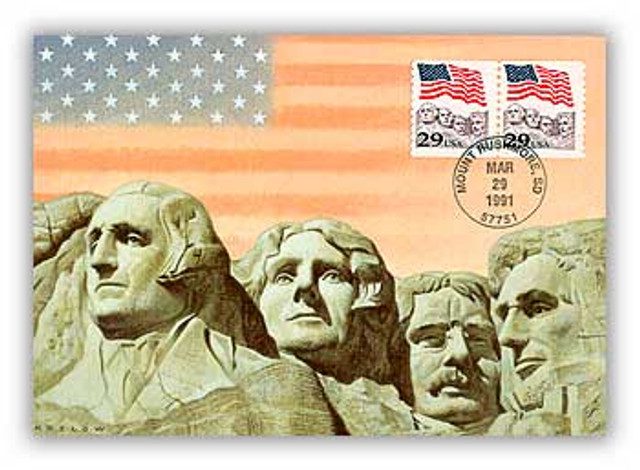

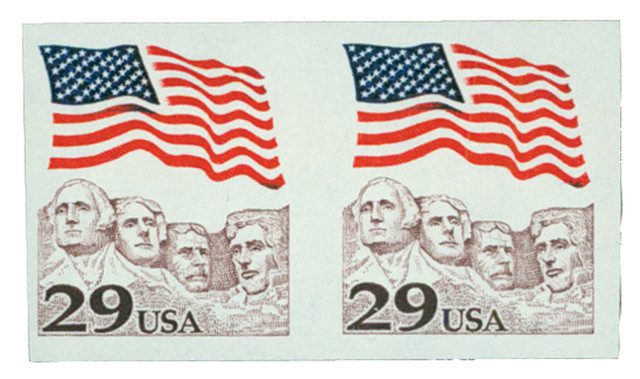
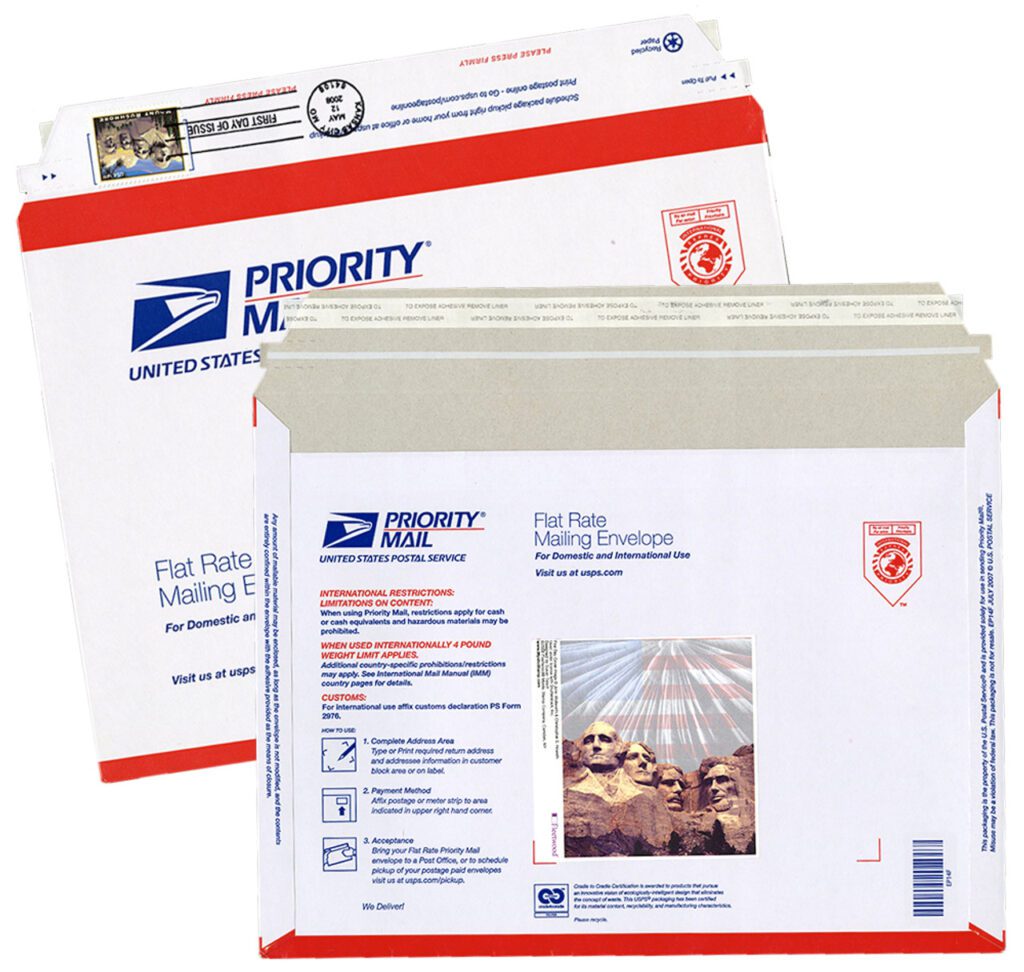
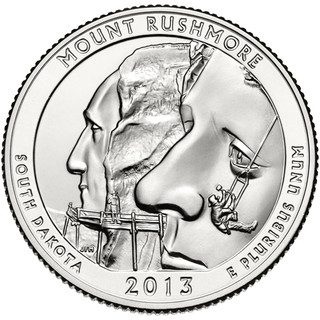
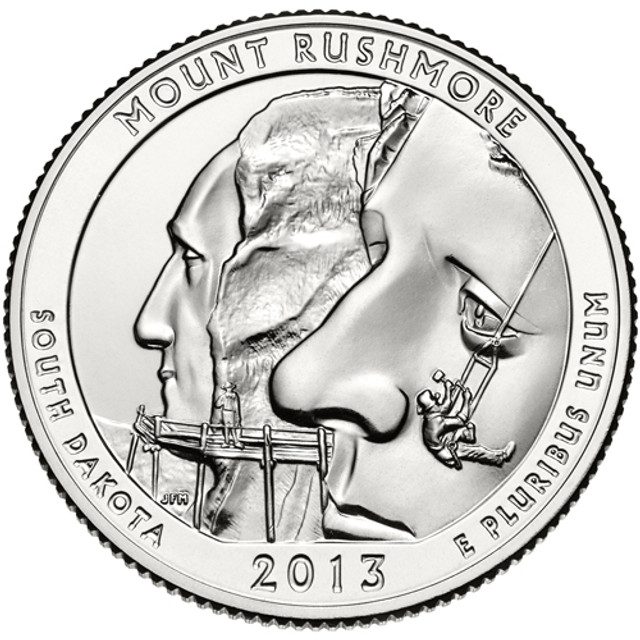
Luigi DelBianco was the chief sculptor. He has not been given credit.
Always been a fan of Mount Rushmore.
A great story! Thank you, Mystic, for your work. The history of our country is always very interesting, and stamp collecting ads to the enjoyment.
if your in the area its well worth seeing ..
Great information. Mystic This Day in History is like the Wikipedia of Stamp Collecting! Thanks Don and crew.
Interesting, but the project did not end in 1941. Construction was halted due to the war. Originally, the figures were to be shown from the waist up. After the war, funding dried up.
I look forward to a mini history lesson everyday. When I was a young boy collecting stamps, pre-internet, I would look up in my encyclopedia where the country was and what the stamp was commemorating. I learned so much about geography and world history, hence my mini history lessons from collecting stamps. That is why enjoy reading your daily day in history with the commemorated stamps. In the future perhaps you could include global histrical events as well. Thanks love reading them!
Dear Mystic Stamp Company
I have never read a more informative piece anywhere on Mount Roushmore.
I hope that your “This Day in History” is available to all students at every level.
Please keep up the great work!
Sincerely,
Thomas Roy Harney
Mystic Stamps History is the Best!
Great article on Mt. Rushmore. Wife and I visited there in 1991, a romantic spot!
A stamp should be made of Louigi Del Bianco the chief carver of Mount Rushmore. Without him the project would not have been completed as it were and not been as perfect as it is. His major part in the monument is proven in a book deeply researched by his grandson Lou Del Bianco. The name of the book is “Out of Rushmore’s Shadow” by Lou Del Bianco. He goes into great detail with over thirty years of hard research to prove with facts of his grandfathers major contribution to the project.
We visited here in 1973. The ride was well worth it. The work is overwhelming/awesome/impressive to say the least. Nearby is Deadwood with the graves of Wild Bill Hickok and Calamity Jane. There is also Ellsworth Air Force Base which at that time had B-52s.